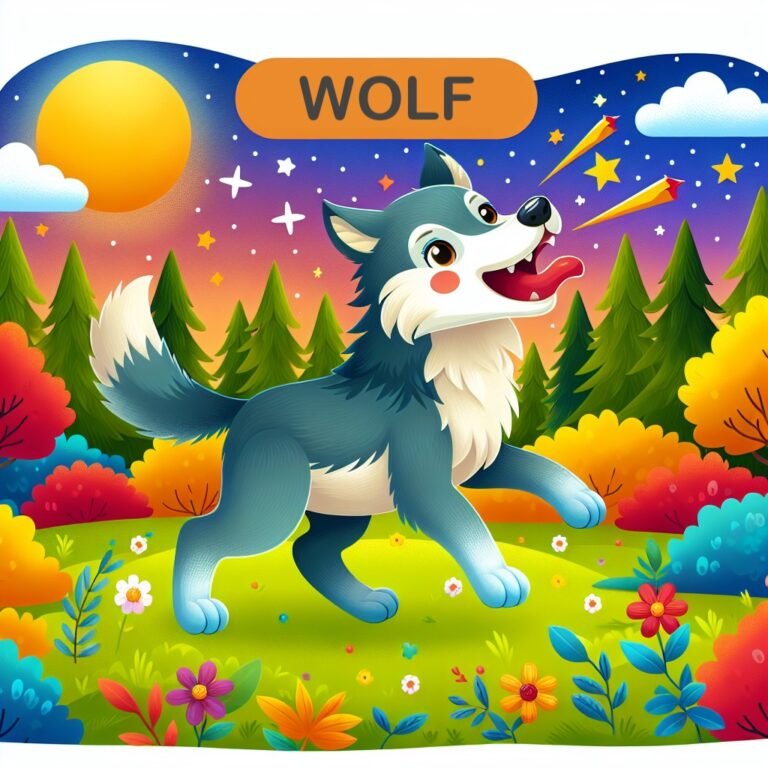Welcome to our latest post on “Wolf Facts For Kids”! If you’re curious about these fascinating creatures and want to learn more about their incredible communication skills, sharp teeth, teamwork dynamics, impressive speed, relationship with domestic dogs, keen sense of smell, adaptability to various environments, pack leadership structure, intelligence as predators, and vital role in ecosystems, then you’re in for a treat. Whether you’re a young nature enthusiast or an older animal lover, there’s something intriguing for everyone in this post. Get ready to explore the world of wolves and uncover the amazing facts that make them such captivating and essential members of the animal kingdom. Let’s dive in and discover the wonders of these majestic creatures together!
Wolf Facts For Kids
1. Wolves Are Incredible Communicators

For younger kids: Wolves howl to talk to their pack and mark their territory.
For older kids: Wolves use howling, body language, and scent marking to communicate important messages within their pack and defend their territory against intruders.
Detailed explanation:Wolves are incredible communicators, especially within their own pack. Through a combination of vocalizations, body language, and scent marking, wolves are able to effectively convey messages and maintain social bonds within the group. One of the most well-known forms of communication among wolves is their howling. Howling serves as a way for wolves to communicate over long distances, allowing pack members to locate each other and potentially warn off rival packs.
In addition to howling, wolves also use a variety of other vocalizations, such as growls, barks, and whimpers, to express different emotions and intentions. For example, a wolf may growl to assert dominance or warn off a rival, while a whine may signal submission or a desire for attention. Body language also plays a crucial role in wolf communication, with behaviors like tail wagging, raised hackles, and ear position conveying important messages to other pack members.
Furthermore, wolves use scent marking as a way to establish territory boundaries and communicate with other packs in the area. By urinating on rocks, trees, and other objects, wolves leave behind a scent that marks their territory and sends a message to other wolves in the area. This form of communication helps to prevent conflicts between rival packs and maintain a balance in the ecosystem.Due to their complex communication abilities, wolves are able to thrive in a variety of environments and successfully cooperate with other pack members to hunt, raise young, and defend their territory. Overall, wolves are truly remarkable communicators, with a sophisticated system of vocalizations, body language, and scent marking that allows them to maintain strong social bonds and navigate their complex social hierarchy.
Wolf Facts For Kids
2. Wolves Have Sharp, Curved Canine Teeth

For younger kids: Wolves have big teeth for eating meat and protecting themselves.
For older kids: Wolves possess powerful jaws with sharp, curved canine teeth designed for gripping and tearing apart prey during hunting and defending against threats.
Detailed explanation:Wolves, as apex predators, have a set of sharp, curved canine teeth that play a crucial role in their survival. These teeth are specifically adapted for tearing flesh and grasping prey, making them powerful tools for hunting and feeding. The sharpness of their teeth allows wolves to easily puncture and tear through the tough hide and muscle of their prey, while the curved shape helps them to grip onto their meal securely.
In addition to hunting, the sharp canine teeth of wolves also play a role in communication within their social structure. Wolves use their teeth to assert dominance, establish pack hierarchy, and defend their territory. By baring their sharp teeth, wolves can signal aggression or submission to other members of their pack, helping to avoid conflicts and maintain order within the group.
For kids interested in learning more about wolves, understanding the function of their sharp, curved canine teeth is a fascinating insight into the world of these incredible creatures. These teeth are not just tools for survival, but also symbols of the unique adaptations that have allowed wolves to thrive in a variety of habitats around the world.
In conclusion, the sharp, curved canine teeth of wolves are an integral part of their biology and behavior. They are essential for hunting, feeding, and communicating within their pack, making them a key feature of these fascinating animals. Wolf Facts For Kids can offer a deeper understanding of how these teeth contribute to the success and survival of wolves in the wild.
Wolf Facts For Kids
3. A Wolf Pack Works as a Team
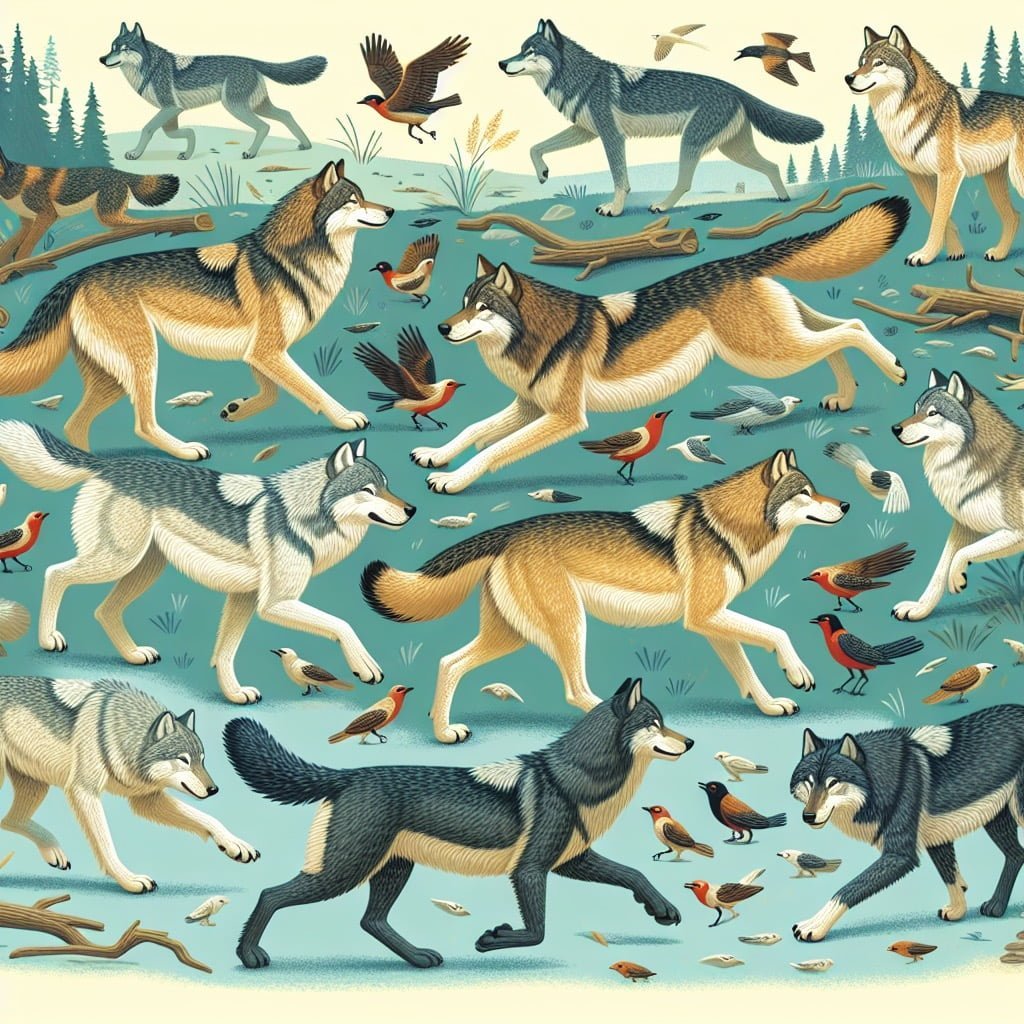
For younger kids: Wolves work together in a big group called a pack to hunt food and raise their young.
For older kids: Wolf packs consist of close-knit family units that cooperate during hunting, caring for pups, and protecting each other, showcasing remarkable teamwork and social bonds.
Detailed explanation:Wolves are highly social animals that live and hunt in groups known as packs. One intriguing fact about wolf packs is that they work together as a team to ensure the survival and success of the group. Each member of the pack plays a specific role, based on their age, size, and skillset, in order to contribute to the overall functioning of the pack.
One key aspect of how a wolf pack operates as a team is through their hunting strategies. Wolves are skilled predators that rely on teamwork to take down large prey such as deer or elk. When hunting, wolves will work together to surround and isolate their target, using their speed, strength, and intelligence to outmaneuver and outwit their prey. By coordinating their efforts and communicating through body language, vocalizations, and scent marking, wolf packs are able to successfully secure a kill and provide food for the entire group.
In addition to hunting, wolf packs also work together to defend their territory and protect their young. Each wolf in the pack has a specific role in guarding the den site, caring for the pups, and patrolling the boundaries of their territory. By working together and cooperating with one another, wolf packs are able to maintain a strong social structure and ensure the safety and well-being of the entire group.
In conclusion, the fact that a wolf pack works as a team highlights the importance of cooperation and communication in the animal kingdom. By understanding how wolves collaborate and support one another, we can gain valuable insights into the social dynamics of these fascinating creatures.Wolf Facts For Kids
Wolf Facts For Kids
4. Wolves Can Run up to 40 Miles per Hour

For younger kids: Wolves are super-fast runners, almost as fast as some cars!
For older kids: Wolves are agile and fast predators, capable of reaching speeds of up to 40 miles per hour when chasing down prey or covering long distances across their expansive territories.
Detailed explanation:Wolves are truly impressive creatures, especially when it comes to their speed. One fascinating fact about wolves that is sure to capture the attention of kids is that they can run up to 40 miles per hour. This incredible speed is essential for wolves when they are hunting for food or defending their territory.
Wolves are known for their incredible stamina and agility, which allows them to reach such high speeds. Their powerful muscles and long legs enable them to cover vast distances swiftly, making them successful hunters in the wild. When chasing prey, wolves can sustain their fast pace for several miles, often outlasting their target through sheer endurance.
For kids who are interested in learning more about wolves, understanding their impressive running capabilities can be both educational and captivating. Encouraging children to delve into Wolf Facts For Kids can help foster a fascination with these magnificent animals and the importance of preserving their natural habitats.
In addition to their impressive speed, wolves also possess keen senses of smell, sight, and hearing, which further enhance their hunting abilities. By learning more about wolves and their behavior, kids can gain a greater appreciation for the unique traits and characteristics that make these animals such remarkable predators.
In conclusion, the fact that wolves can run up to 40 miles per hour is a testament to their strength, agility, and adaptability in the wild. By exploring Wolf Facts For Kids, children can develop a deeper understanding of these fascinating creatures and the crucial role they play in maintaining the balance of nature.
Wolf Facts For Kids
5. The Wolf is a Cousin of the Domestic Dog
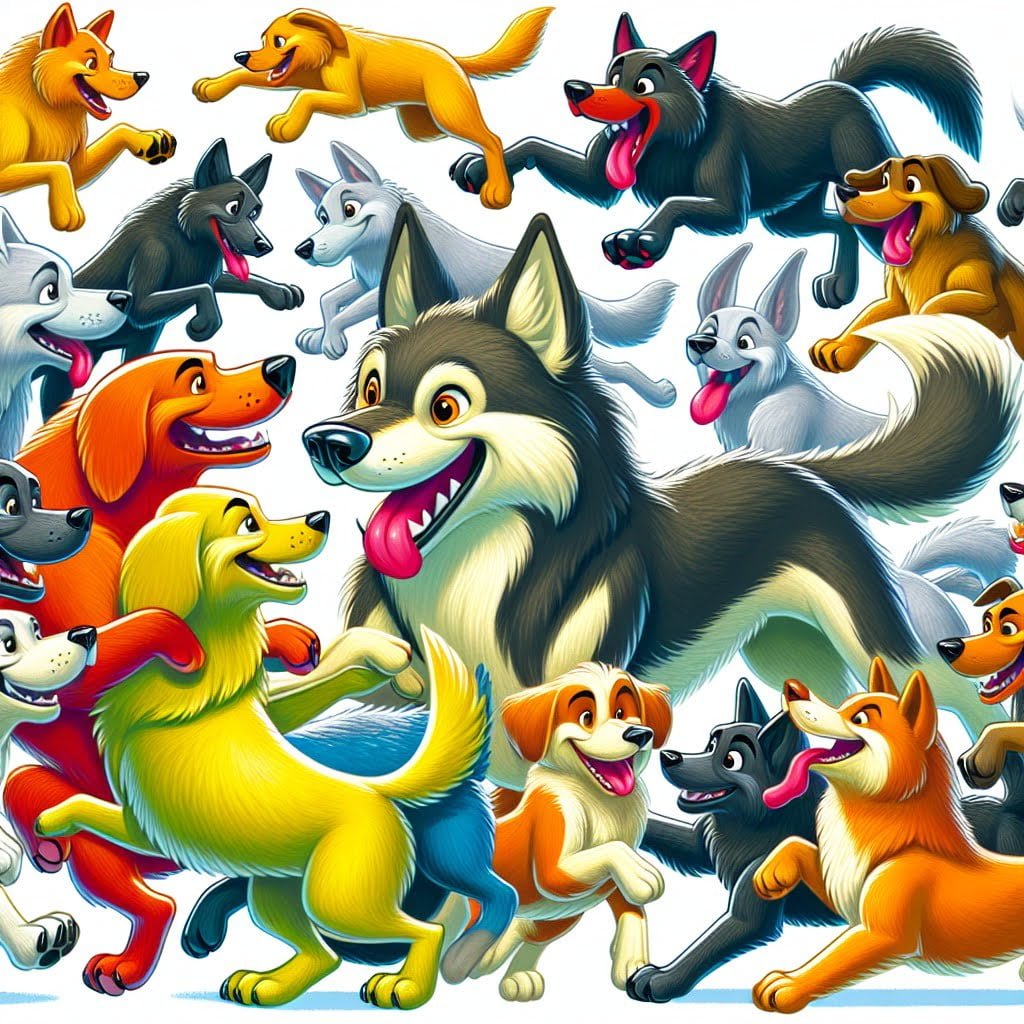
For younger kids: Wolves and dogs are related, like faraway cousins!
For older kids: Domestic dogs share a common ancestry with wolves, with both belonging to the same Canidae family and sharing similar physical characteristics, behaviors, and social structures.
Detailed explanation:Wolves are fascinating creatures that have captivated the imagination of humans for centuries. One interesting fact about wolves is that they are actually cousins of the domestic dog. This may come as a surprise to many, as wolves and dogs seem quite different in terms of behavior and appearance. However, both wolves and dogs belong to the same taxonomic family, Canidae, which also includes other species such as foxes and coyotes.
The relationship between wolves and dogs is a complex one that dates back thousands of years. It is believed that dogs were domesticated from wolves around 15,000 years ago, with some studies suggesting that this process may have occurred even earlier. Despite the physical and behavioral differences between wolves and dogs, they share a common ancestor and are genetically very similar. In fact, domestic dogs still retain many wolf-like traits, such as their social structure and hunting instincts.
One way in which wolves and dogs differ is in their relationship with humans. While wolves are generally wary of humans and tend to avoid contact with them, dogs have been bred for centuries for companionship and work. This has led to the development of a strong bond between dogs and humans, in contrast to the more independent nature of wolves.
In conclusion, the fact that wolves are cousins of the domestic dog highlights the close relationship between these two species. Despite their differences, wolves and dogs share a common ancestry and have played important roles in human history. Understanding the link between wolves and dogs can provide valuable insights into the behavior and evolution of these fascinating animals.
Wolf Facts For Kids
6. Wolves Have a Keen Sense of Smell

For younger kids: Wolves use their nose to find food and know who’s nearby.
For older kids: Wolves rely on their acute sense of smell to track and locate prey over long distances, identify pack members, detect danger, and navigate their surroundings effectively.
Detailed explanation:Wolves have long been known for their remarkable sense of smell, which plays a crucial role in their daily lives. In fact, it is estimated that a wolf’s sense of smell is up to 100 times more powerful than that of a human. This heightened olfactory ability allows wolves to detect scents from great distances, making it a vital tool for survival in the wild.
For wolf pups, their sense of smell is essential for locating their mother and siblings, as well as finding food. As they grow older, wolves use their keen sense of smell to communicate with other pack members, mark territories, and track prey. In fact, wolves are able to detect scents that are up to a week old, giving them an advantage when hunting.
Another fascinating aspect of a wolf’s sense of smell is their ability to distinguish between individual scents. This allows them to identify pack members, rivals, and potential mates based on scent alone. Wolves also use their sense of smell to navigate their environment, using scent trails to find their way back to their den or locate sources of food and water.
Overall, the keen sense of smell possessed by wolves is a crucial adaptation that has helped them thrive in a variety of habitats. From hunting and marking territories to finding pack members and communicating with other wolves, a wolf’s sense of smell is truly a remarkable and essential trait that has contributed to their success as a species. Wolf Facts For Kids are incomplete without highlighting the impressive olfactory abilities of these fascinating animals.
Wolf Facts For Kids
7. Wolves Are Masters of Adaptability
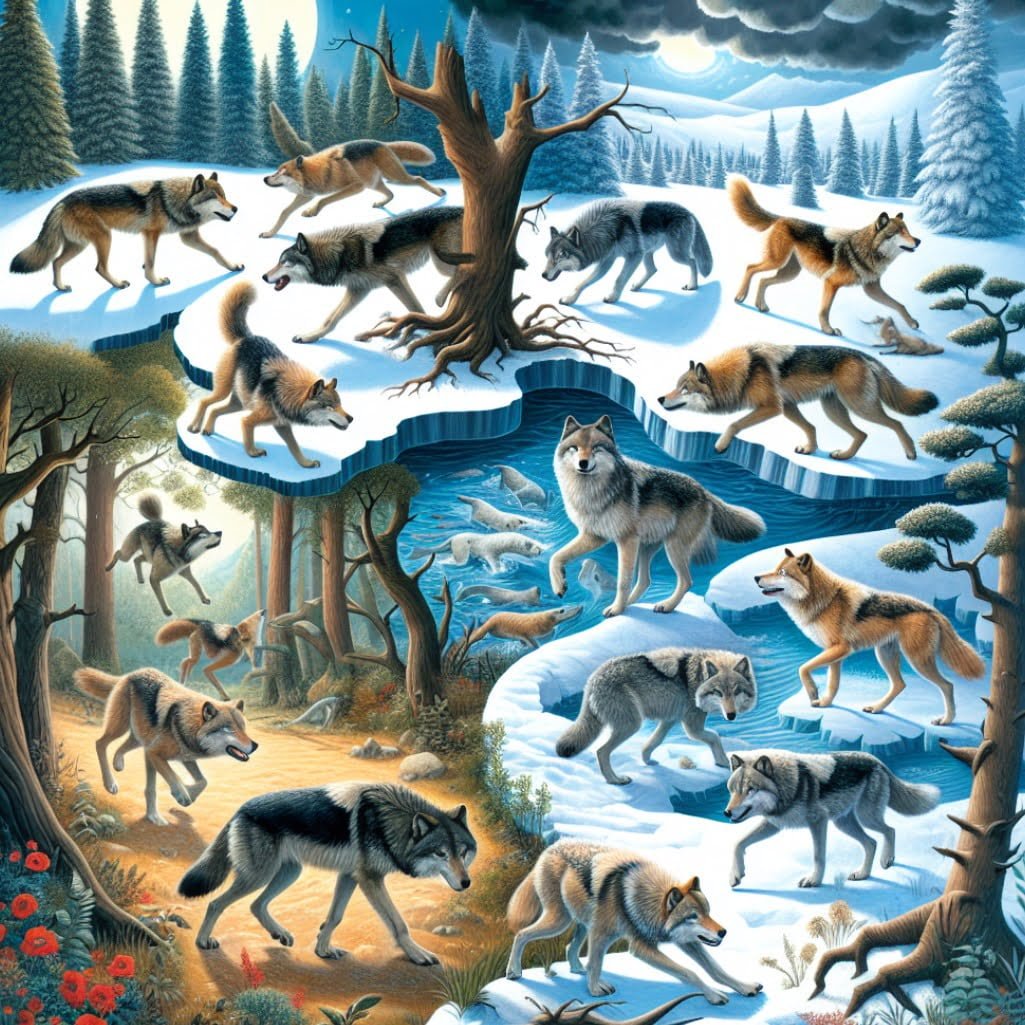
For younger kids: Wolves can live in many different places around the world, from snowy forests to deserts!
For older kids: Wolves are highly adaptable creatures, capable of thriving in a wide range of environments, including forests, tundra, deserts, and mountains, showcasing their remarkable ability to survive and thrive in various habitats.
Detailed explanation:Wolves are truly fascinating creatures known for their incredible adaptability in various environments. As Wolf Facts For Kids state, these animals are masters of adaptability, allowing them to thrive in a wide range of habitats around the world.
One of the key reasons why wolves are such adaptable creatures is their social nature. Wolves are highly intelligent and social animals that live in packs, which can range in size from just a few individuals to over 30. This social structure allows wolves to work together to hunt, raise offspring, and defend their territory, making them formidable predators in the wild.
Furthermore, wolves have a diverse diet that includes a wide range of prey such as elk, deer, beavers, and even smaller mammals like rabbits and rodents. This varied diet helps wolves survive in different ecosystems, from forests and mountains to tundras and grasslands.
Wolves also have physical adaptations that help them thrive in different environments. Their thick fur coats provide insulation in cold climates, while their keen senses of smell and hearing help them locate prey in dense forests or open plains. Additionally, wolves have powerful jaws and sharp teeth that allow them to take down large prey efficiently.
Overall, the adaptability of wolves is truly remarkable and has allowed them to successfully inhabit a wide range of habitats around the world, from the Arctic tundra to the deserts of Africa. Understanding how wolves have evolved to thrive in different environments can provide valuable insights into the resilience and intelligence of these captivating animals.
Wolf Facts For Kids
8. The Alpha Wolf Leads the Pack

For younger kids: The alpha wolf is like the pack leader who protects and guides everyone else.
For older kids: The alpha wolf is the highest-ranking member of the pack, responsible for making crucial decisions, leading the group during hunts, and maintaining order and harmony within the pack’s social hierarchy.
Detailed explanation:In a wolf pack, the Alpha wolf holds a crucial role in leading and making decisions for the group. This dominant individual is typically a strong and experienced wolf, responsible for guiding the pack during hunting, maintaining territory, and defending against potential threats. The Alpha wolf often leads the pack in activities such as hunting, with the rest of the group following behind in a structured formation.
One interesting aspect of wolf pack dynamics is that the Alpha wolf is not necessarily the strongest or largest member of the pack. Instead, they are usually the most intelligent and strategic in their decision-making, allowing them to effectively lead the group towards success. The Alpha wolf also plays a key role in mediating conflicts within the pack, ensuring that harmony is maintained among the members.
It is important to note that the Alpha wolf does not rule over the pack through fear or aggression, but rather through respect and loyalty from the other members. They establish their leadership through displays of confidence and assertiveness, as well as by consistently making decisions that benefit the overall well-being of the pack.
In conclusion, the Alpha wolf in a pack is a key figure in ensuring the survival and success of the group. Through their leadership skills and strategic decision-making, they are able to guide the pack towards achieving their goals and maintaining a harmonious social structure. Learning about these Wolf Facts For Kids can help us better understand and appreciate the fascinating world of wolf pack dynamics.
Wolf Facts For Kids
9. Wolves Are Highly Intelligent Predators
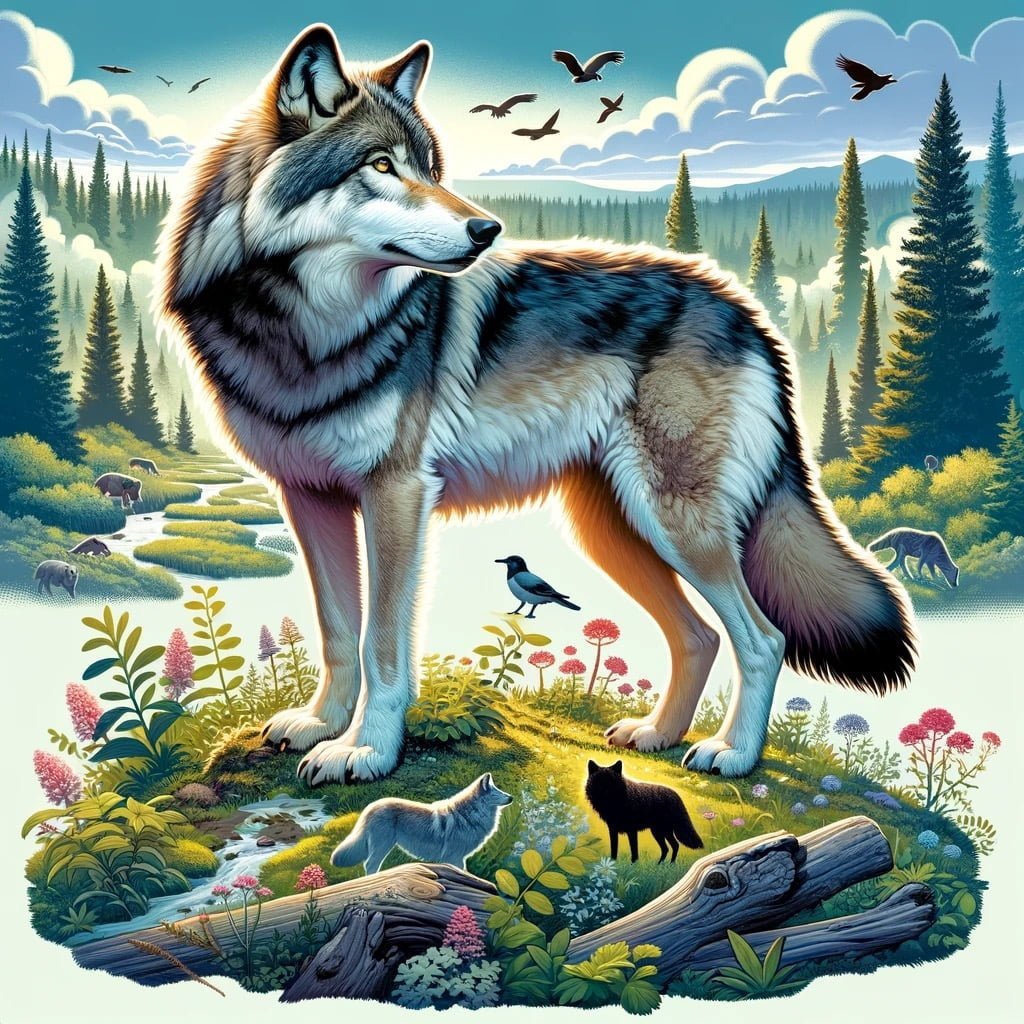
For younger kids: Wolves are clever hunters who use teamwork to catch their food.
For older kids: Wolves exhibit intelligence in problem-solving, strategic hunting techniques, communication, and adapting their behaviors to different situations, making them highly skilled and resourceful predators in the wild.
Detailed explanation:Wolves are highly intelligent predators, making them fascinating creatures to study and learn about. In fact, they have a complex social structure within their packs that requires a high level of intelligence to navigate successfully. This social structure is built around a hierarchy, with an alpha wolf leading the pack and making important decisions for the group.
One key aspect of wolf intelligence is their ability to communicate effectively with one another. They use a variety of vocalizations, body language, and even scent marking to convey information and maintain order within the pack. This communication is essential for coordinating hunts, raising young, and defending territory.
In addition to their social intelligence, wolves also demonstrate problem-solving skills when it comes to hunting. They are known to use coordinated tactics to take down prey much larger than themselves, such as bison or moose. This requires not only physical strength, but also strategic planning and teamwork.
Furthermore, wolves have keen senses that help them navigate their environment and locate prey. Their sense of smell is particularly impressive, allowing them to track animals over long distances. This ability to gather information from their surroundings and make quick decisions based on that information is a clear indication of their high level of intelligence.
Overall, wolves are truly remarkable predators that exhibit a range of intelligent behaviors. Studying them can provide valuable insights into animal behavior, social dynamics, and the complexities of the natural world.Wolf Facts For Kids
Wolf Facts For Kids
10. Wolves Play a Vital Role in Ecosystems
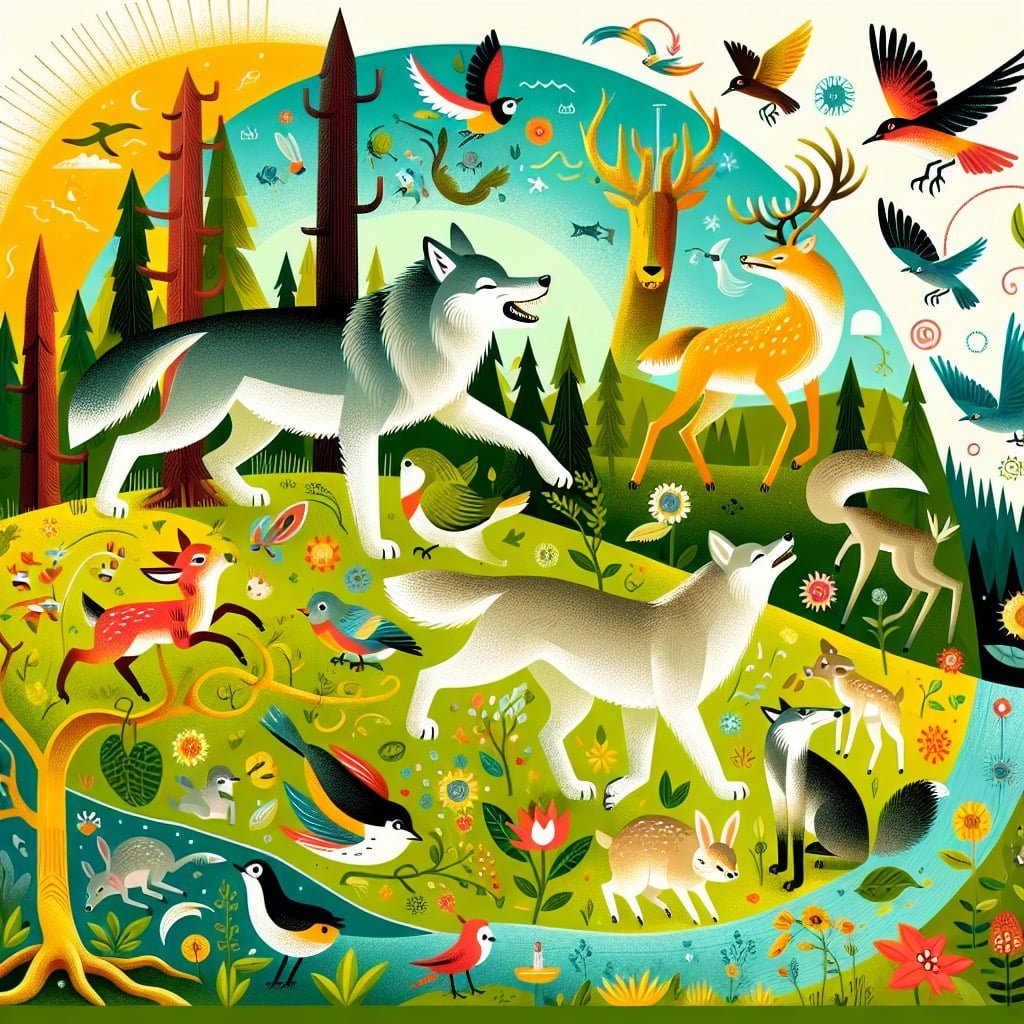
For younger kids: Wolves help keep nature in balance by hunting animals and preventing overpopulation.
For older kids: Wolves are known as keystone species, playing a crucial role in maintaining the health of ecosystems by regulating prey populations, influencing the behavior of other wildlife, and shaping the structure of landscapes through their presence and hunting activities.
Detailed explanation:Wolves play a vital role in ecosystems, serving as keystone predators. As top predators, they help regulate the population of prey species such as deer and elk, which in turn affects the vegetation and other animals in the ecosystem. This is known as a trophic cascade, where the presence or absence of a predator like wolves can have far-reaching effects on the entire ecosystem.
One of the most important roles that wolves play in ecosystems is helping to maintain the balance of species. By hunting and controlling the population of herbivores, wolves prevent overgrazing and allow plant life to flourish. This, in turn, provides habitat and food for a variety of other species, from birds to insects to small mammals. Without wolves, the delicate balance of the ecosystem can be disrupted, leading to a cascade of negative effects on both plant and animal life.
In addition to controlling prey populations, wolves also shape the behavior of their prey. The presence of wolves leads to a phenomenon known as the “landscape of fear,” where prey species alter their behavior in response to the threat of predation. For example, deer may avoid certain areas or feed at different times of day to minimize their risk of encountering a wolf. This in turn can affect the vegetation in those areas, creating a ripple effect throughout the ecosystem.
Overall, wolves are a vital component of healthy ecosystems. Their presence helps maintain biodiversity, regulate populations, and promote a balanced and sustainable ecosystem. It is crucial for us to understand and appreciate the important role that wolves play in the natural world, and to work towards conserving and protecting these magnificent animals for future generations to enjoy.
Did you know?
Did you know that wolves have a unique howl that can be heard from up to 10 miles away?
Summary of Wolf Facts For Kids
If you’re fascinated by the mysterious and majestic world of wolves, this blog post is a must-read for you! Discover the incredible communication skills of wolves, their sharp and curved canine teeth, and their remarkable teamwork within a pack. Learn about their impressive speed, close relation to domestic dogs, keen sense of smell, and exceptional adaptability to various environments. Delve into the leadership dynamics of the alpha wolf, the intelligence of these clever predators, and their vital role in maintaining ecosystem balance. Packed with fun facts and engaging insights, this blog post offers a captivating glimpse into the fascinating world of wolves that will leave you eager to learn more about these captivating creatures. Explore these wolf facts for kids and unleash your curiosity about the incredible world of nature!
Sources and additional information for Wolf Facts For Kids
WikipediaBritannicaSan Diego Zoo KidsThe Smithsonian InstitutionDK Find Out!Australian MuseumWorld Wildlife FundThe Nature ConservancyAnimal PlanetMonterey Bay AquariumPBS NatureSmithsonian’s National Zoo & Conservation Biology InstituteWorld Wildlife FundAnimal Diversity Web (University of Michigan)IUCN Red List of Threatened SpeciesThe Cornell Lab of Ornithology – All About BirdsNational Audubon SocietyEncyclopedia of LifeSeaWorld Parks & EntertainmentAustralian Museum – AnimalsEncyclopedia of Life
